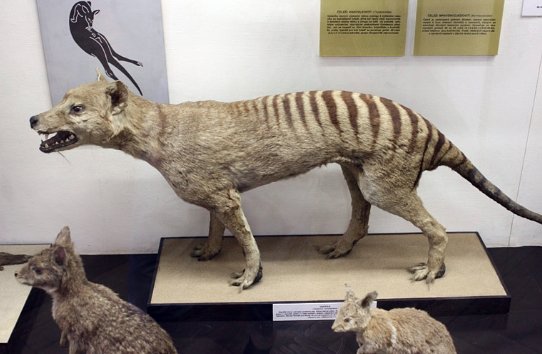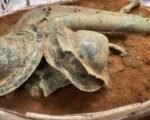In a groundbreaking development, researchers are on the brink of resurrecting the Tasmanian tiger, a species that has been extinct since 1936. Thanks to the reconstruction of its genome, scientists believe they are just steps away from bringing this iconic marsupial back to life.
The last known Tasmanian tiger, or thylacine, died in a Hobart zoo, leaving behind a legacy of extinction. However, recent advancements in genetic research have sparked hope for its revival, potentially benefiting the ecosystem of Tasmania.
The Role of Ancient Specimens
A significant breakthrough in this de-extinction project came from an unexpected source: a 110-year-old preserved thylacine head found in a Melbourne museum. This rare specimen has allowed scientists to extract vital RNA from various parts of the animal, including its tongue and brain.
- Key findings from the preserved head:
- RNA extraction from the tongue, nasal cavity, brain, and eye.
- Insights into gene expression in thylacines.
- Potential understanding of sensory perceptions like taste and smell.
Dr. Andrew Pask, leading the research at the University of Melbourne, emphasized the importance of this sample. It provides a unique opportunity to explore the thylacine’s biology and behavior, paving the way for a more accurate reconstruction of the species.

Genetic Editing and Progress
Colossal Biosciences, the company spearheading this project, is also working on editing the DNA of the fat-tailed dunnart, the closest living relative of the thylacine. By making over 300 unique genetic changes, they aim to create a living thylacine.
The new genome is remarkable, boasting over 99.9% accuracy and minimal gaps. This level of precision is unprecedented, making it the most edited animal cell to date.
- Highlights of the genome project:
- Assembled to the level of chromosomes.
- Includes challenging repetitive features like centromeres and telomeres.
- Only 45 gaps remain, which will be addressed in future sequencing.
This meticulous work is crucial for ensuring that the revived thylacine can thrive in its natural habitat, should it be successfully brought back.
The Extinction Story
The Tasmanian tiger’s extinction was primarily driven by human actions. In the 19th century, they were labeled as pests due to their predation on sheep, leading to government-sanctioned bounties on their heads.
By the time the last thylacine died, the species was already on the brink of extinction. The loss of this unique marsupial has raised questions about the impact of human intervention on wildlife.
- Factors contributing to extinction:
- Persecution due to livestock predation.
- Habitat loss and competition with introduced species.
- Lack of conservation efforts during critical periods.
Reintroducing the Tasmanian tiger could restore balance to the ecosystem, as Dr. Pask noted. The potential benefits of re-establishing this apex predator could have far-reaching effects on biodiversity in Tasmania.
The Debate on De-Extinction
While the prospect of reviving the Tasmanian tiger is exciting, it also raises ethical questions. Critics argue that the resources allocated to de-extinction projects could be better spent on conserving endangered species currently facing extinction.
Despite the controversy, Colossal Biosciences remains committed to its mission. The company is not only focused on the thylacine but also aims to revive other extinct species like the woolly mammoth and the dodo.
As scientists continue their work, the dream of seeing Tasmanian tigers roam the earth again may not be as far-fetched as it once seemed. The next few decades could witness a remarkable shift in our relationship with extinct species.














